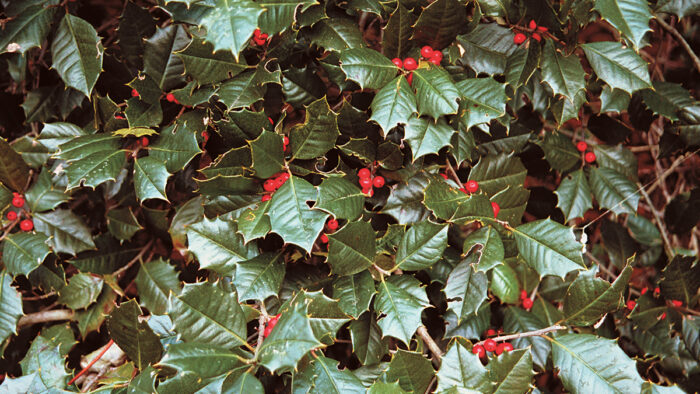
The mere mention of holly brings to mind conical trees with spiny leaves and red berries in winter. That image is valid, but I love evergreen hollies because they are, in fact, so much more diverse than that. They range in size from a 6-inch-tall spreading dwarf to a 70-foot-tall towering giant. Leaves may be small and spineless or large and armed. Berries can be red, orange, yellow, or black. Hollies are one of the few genera that can be grown in all 50 states.
For more on hollies, check out our plant guide.
Wondering how to prune your holly plant? Read more.
Evergreen hollies at a glance
Ilex spp. and cvs.
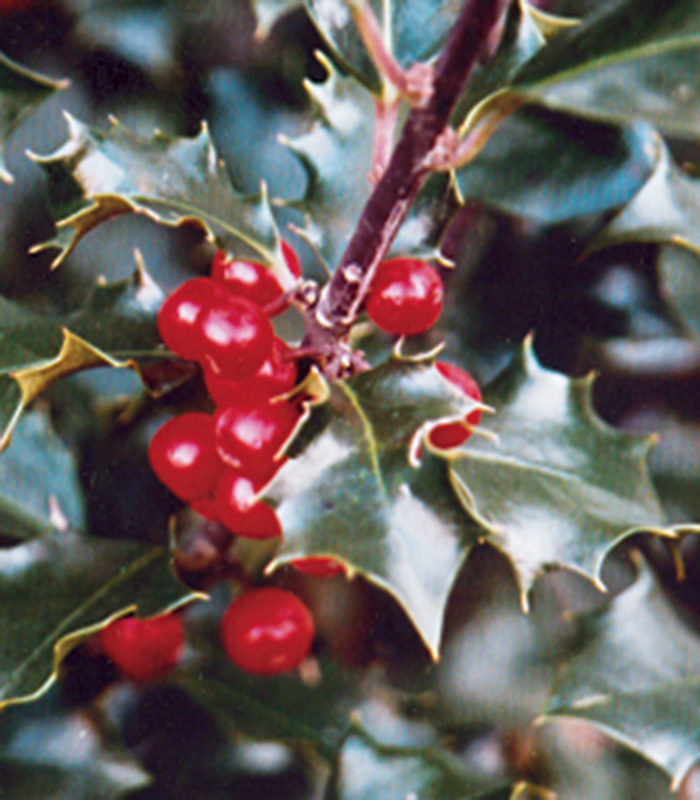
(EYE-leks)
- The Ilex genus contains more than 780 evergreen and 30 deciduous species of trees and shrubs native to North and South America, Europe, Asia, Africa, and Australia.
- Hollies are dioecious; male plants produce pollen, and female plants produce berries. A male plant must grow within 30 to 40 feet of a female for good fruit production.
- There are hollies that will grow as far north as USDA Hardiness Zone 3 and as far south as Zone 11.
- Most hollies prefer full sun and well-drained, slightly acidic soils. Some species will grow in shade but will produce less fruit.
- Hollies are relatively pest-free, but some do suffer from winter dieback.
- Propagate by seed, cuttings, layering, or grafting. Seeds can take several years to germinate. Take cuttings from deciduous species in early summer and evergreen species in late summer. Treat the cuttings with hormones and root under mist.
At the Scott Arboretum at Swarthmore College, where I am the curator, I take full advantage of the versatility of this genus. I use specimen hollies as focal points, as foundation plantings, and as privacy screens and hedges.
Specimens combine good foliage and great berries
A specimen plant is one that is unusual enough to stand alone in a landscape. When placed alone, a specimen holly can be used as a focal point to draw interest to an area. When repeated several times throughout a landscape, specimen hollies can tie a garden together. Unusually attractive hollies can also be grouped to serve as a backdrop for a more intricate planting.
Several evergreen hollies that combine attractive foliage with abundant, colorful fruit make good specimen plants. A few English holly (Ilex aquifolium) cultivars offer great range in plant size, fruit color, foliage shape, and variegation. ‘Rubricaulis Aurea’ offers strikingly variegated forest-green and cream leaves. ‘Peter’s’ has brick-red fruits and suffers the least winter damage of all the English hollies in the arboretum.
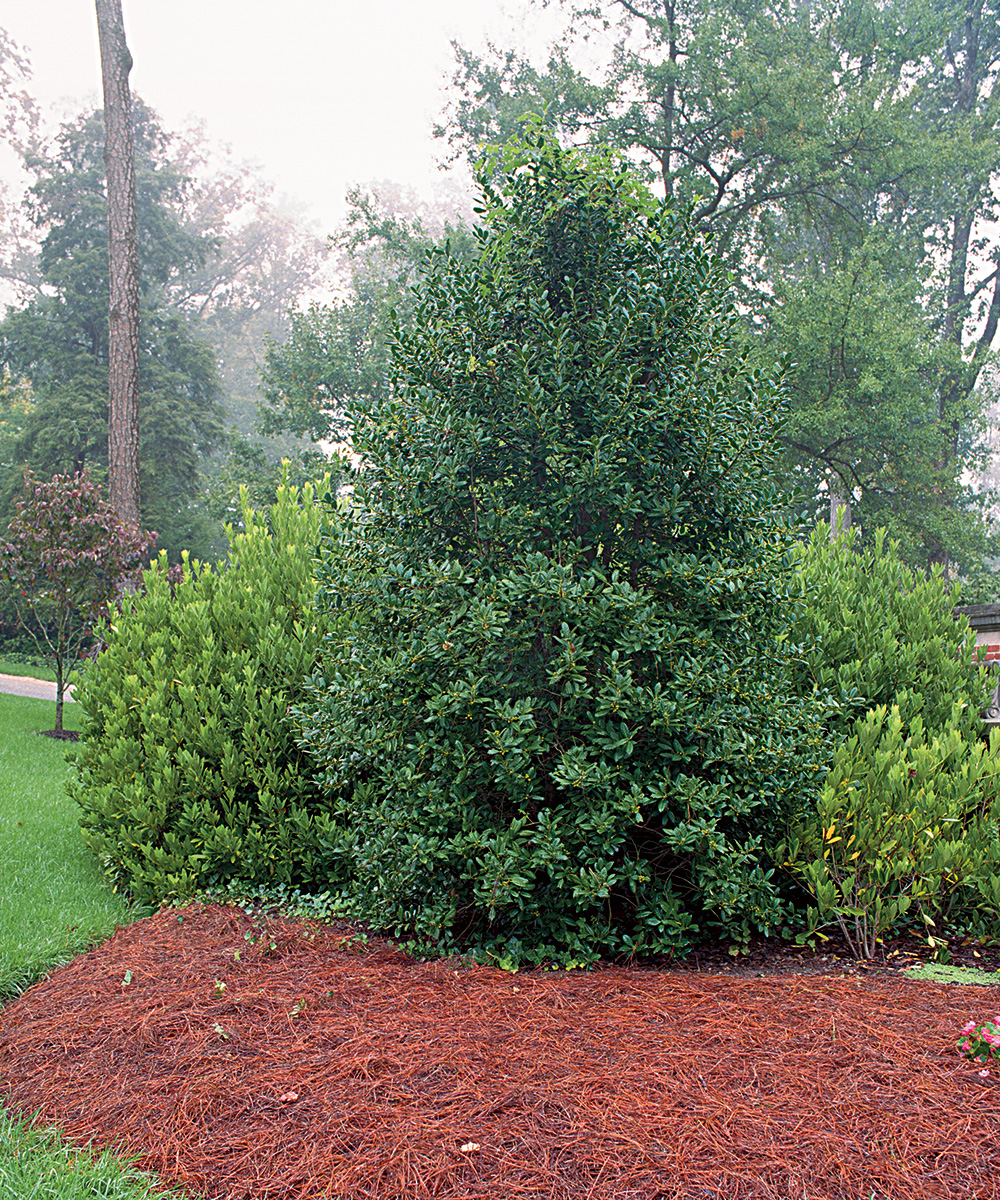
The Altaclere holly (Ilex × altaclerensis) is the quintessential tree holly. It has lustrous dark-green leaves like those of the English holly, but the Altaclere holly suffers much less from winter damage. Its relatively large, bright-red berries contrast nicely with the deep-green foliage. This pyramidal tree reaches from 20 to 30 feet tall at maturity. One excellent cultivar is ‘James G. Esson’.
Dotted through the gardens at the Scott Arboretum are many forms and hybrids of American holly (I. opaca) that are worthy of note. Perhaps the finest fruiting selection of all the American hollies is ‘Old Heavy Berry’. It becomes heavily laden with brick-red, pea-size berries come winter. The yellow fruit of ‘Boyce Thompson Xanthocarpa’ makes it an excellent specimen holly, whereas ‘John Wister’ is noteworthy for its growth habit. This male cultivar flaunts black-green foliage on the tightly knit branches that make up its pyramidal shape.
The longstalk holly (I. pedunculosa) doesn’t look like a typical holly. The leaves are not spined but instead have smooth, undulating edges that taper at the end. It is called the longstalk holly because the pedicel (the stem that holds the berry) is much longer than that of other species. The combination of the spineless foliage and the fruit displayed on long stems makes for an elegant plant. Though the growth habit of the longstalk holly is somewhat rangy, with branches that grow in random directions, this habit makes it a good plant to espalier on a wall or fence.
Some hollies function well in foundation groupings
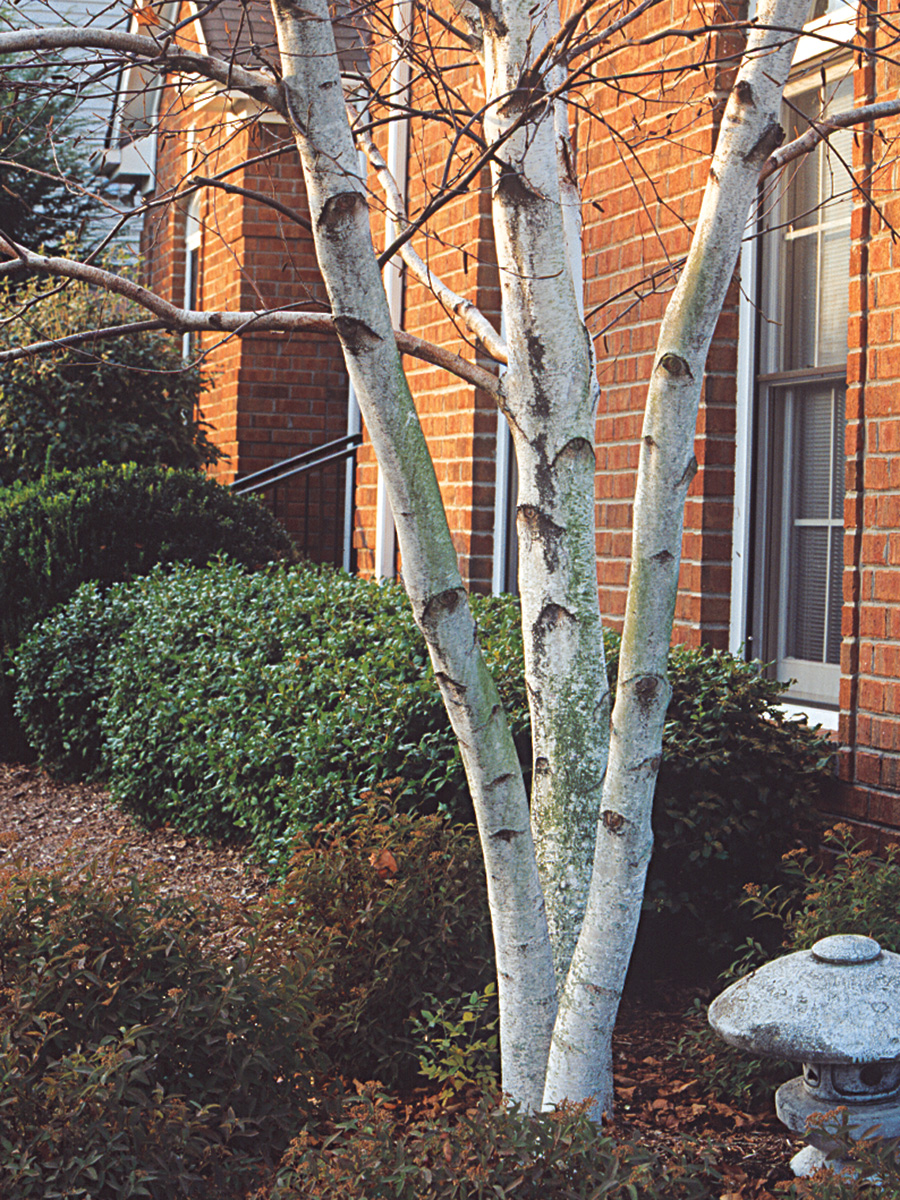
If you walk around your neighborhood, you’ll surely see the quintessential American interpretation of a foundation planting: a single row of the same species of plant, usually ill suited to the site. I hesitate to categorize hollies as foundation plants for fear that they will be subjected to the same fate. I’m not suggesting that houses don’t benefit from plants placed around the foundation, but a successful foundation grouping should have a complement of shrubs (both deciduous and evergreen), perennials, and some larger plants to anchor the house to the landscape. Some evergreen hollies are perfect choices for the type of foundation grouping I’m suggesting.
The blue holly (I. × meserveae) combines the glossy leaves and red fruit of the English holly with the hardiness of the Tsura holly (I. rugosa). The resulting hybrid is a relatively hardy shrub with English holly attributes. Blue Angel®, Blue Maid® and Blue Princess® have red fruits, while Golden Girl® has yellow berries. Selectively prune these shrubs to keep them at the desired height for a foundation planting.
Excellent anchor plants for a foundation planting include the Red Holly™ hybrids. These hollies, which feature beautifully glossy, spined leaves, are just coming on the market. They include I. Cardinal™, I. Festive™, I. Little Red™, I. Oak Leaf™, and I. Robin™. Ranging in mature height from 10 to 15 feet tall, they make good corner plants because they don’t overpower the house.
Create privacy with a holly hedge
Because of their evergreen nature, ease of pruning, and generally quick growth rate, hollies are the perfect plants for screening and hedging in the garden. If you are imagining a large hedge, consider I. × aquipernyi since it reaches between 20 and 25 feet at maturity. This fast-growing tree with spiny foliage quickly grows into an impenetrable mass. The leaves look like small triangles with a sharp spine on each point.
One of the best I.× aquipernyi cultivars for a medium-size hedge is Dragon Lady® because it reaches only 15 feet at maturity. Occasional pruning will keep these hedge hollies tidy without giving them an overly formal appearance.

A more informal treatment can be accomplished using the inkberry holly (I. glabra). It has narrow, glossy, unspined leaves and tiny black fruits. The narrow foliage produces a much finer texture than that of many other hollies. ‘Densa’ will reach 10 feet tall at maturity, while ‘Shamrock’ will stay under 5 feet.
For a shorter hedge, the best choice is the Japanese holly (I. crenata). While this species is by far the most ubiquitous of all the hollies (and arguably overused if not misused as a foundation planting), it does have great application for screening purposes. The leaves are tiny and dark green, it is rapid growing, and it is easily sheared into any shape. A relatively new, very upright selection is ‘Sky Pencil’. Also offering an upright habit but giving more width than ‘Sky Pencil’ is ‘Steeds’. For a more mounding habit, ‘Helleri’, ‘Convexa’, and ‘Green Lustre’ are excellent.
Plant a male and a female for best berry set
The Scott Arboretum was designated an official Holly Arboretum by the Holly Society of America. Each year, we evaluate every specimen in our collection for aesthetics, winter damage, and pest and disease problems. After 15 years of evaluation, hollies appear to be relatively trouble free in Philadelphia’s USDA Hardiness Zone 6 climate.
Hollies are dioecious, which means that plants have either male or female flowers. For good pollination and fruit production you need a female (or berry-producing plant) and a male (or pollen-producing plant) within 30 to 40 feet of each other.
Most evergreen hollies thrive best in full sun. The Japanese, American, Koehne, and longstalk hollies will grow in shade, but produce significantly more fruit when grown in sun. Most hollies prefer a well-drained, slightly acidic soil that is high in organic matter. Inkberries will grow in slightly damp soils.
Pruning is necessary only if you want to restrict your holly to a certain shape or size, or if you are growing a hedge. Shaping can be accomplished by removing the tips of the current season’s growth during late summer, fall, or winter. To rejuvenate a holly, “hat rack” it in late winter by cutting back the branches by half to three-quarters of their length. The remaining plant will have few leaves and look like a hat rack, but in spring it will flush out with new foliage from all the pruning cuts. In two to three years, it will be fully covered in leaves. Hat racking will result in a plant much reduced in size, but still full of foliage.
The best hollies for the landscape
While the growth habit and size of some hollies dictate that they be used as specimen plants in the landscape, other types are more at home in foundation groupings and as hedge plants. Here are a few of the author’s favorite hollies for the uses described.
 |
 |
 |
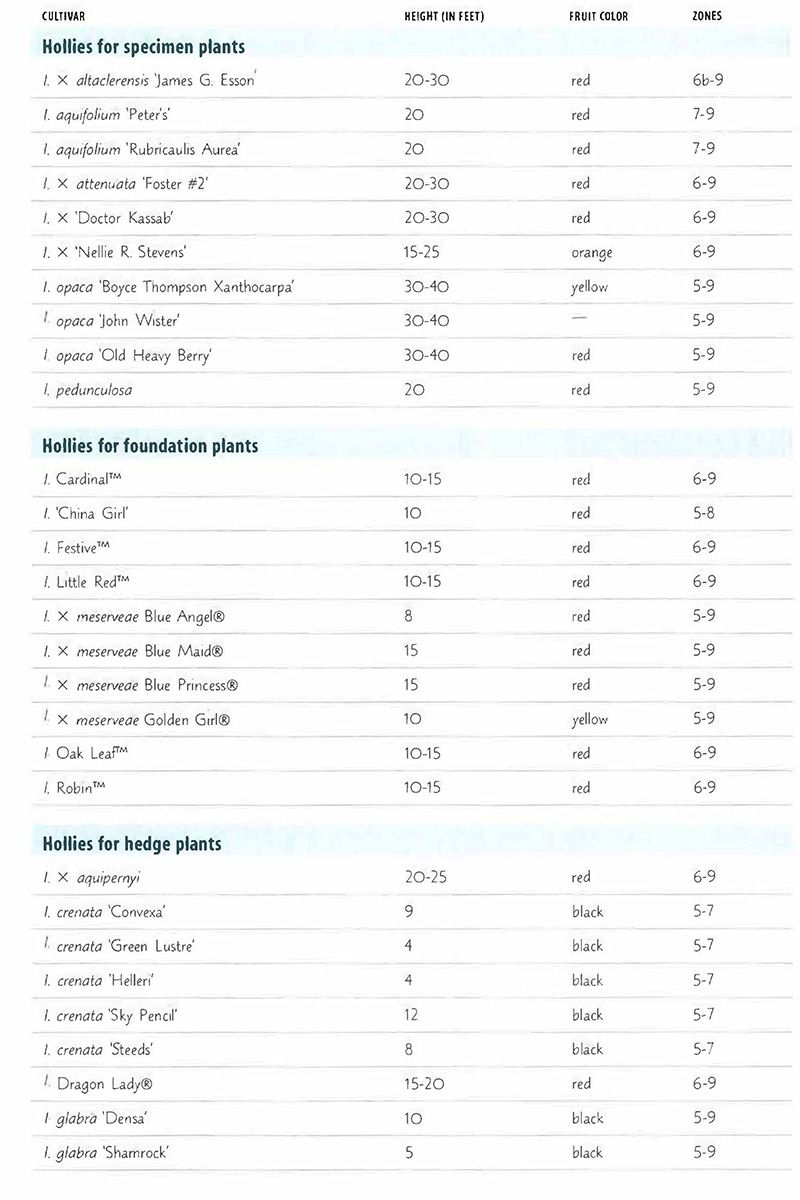
 |
 |
Andrew Bunting is curator of the Scott Arboretum at Swarthmore College in Swarthmore, Pennsylvania.
Photos, except where noted: Mike Courtney
Related content:
Fine Gardening Recommended Products

Organo Republic 16 Perennial Wildflower Seeds Mix for Indoor & Outdoors
Fine Gardening receives a commission for items purchased through links on this site, including Amazon Associates and other affiliate advertising programs.

DeWalt Variable-Speed Cordless Reciprocating Saw with 6-Piece Saw Blade Set
Fine Gardening receives a commission for items purchased through links on this site, including Amazon Associates and other affiliate advertising programs.
- 18.31 x 6.13 x 4 inches
- 1-1/8-inch stroke length
- Variable speed trigger with 0-3000 spm
- DW4856 Metal/Woodcutting Reciprocating Saw Blade Set, 6-Piece

ARS Telescoping Long Reach Pruner
Fine Gardening receives a commission for items purchased through links on this site, including Amazon Associates and other affiliate advertising programs.


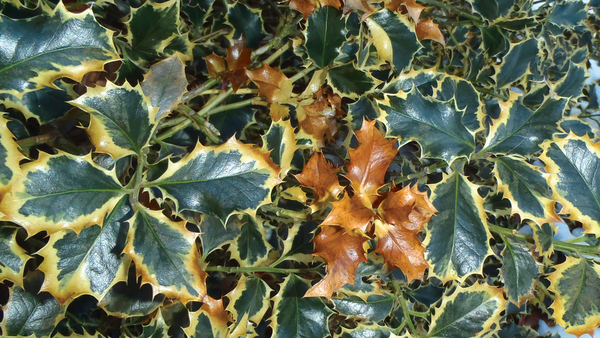
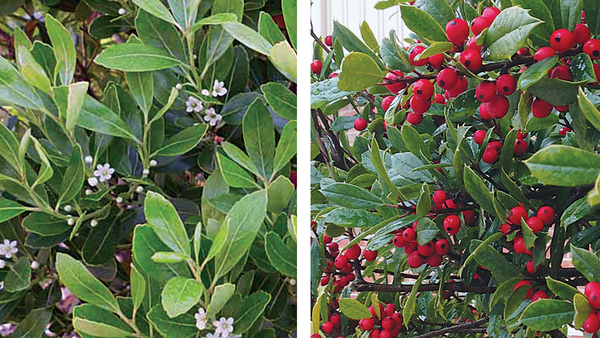














Comments
I have a compact pyramidal growing definitely dwarf holly. I planted it three years ago and it has grown around 3 inches in height and about 1 1/2 inches in diameter. The tree itself is 30 inches in height. I'm having the hardest time finding out the type of Ilex it is so I can buy another. Please help thanks.
I really like this hollies plant. You did nice work in your garden. You really maintain your garden.Great work.
Log in or create an account to post a comment.
Sign up Log in